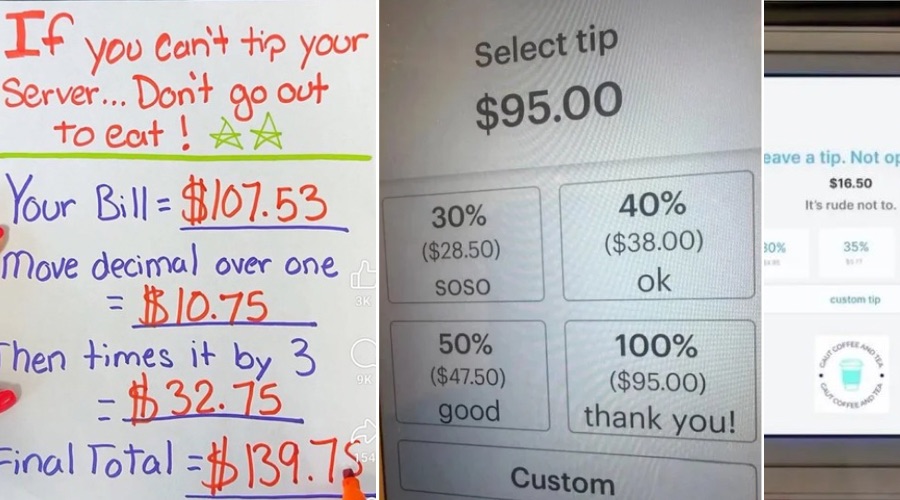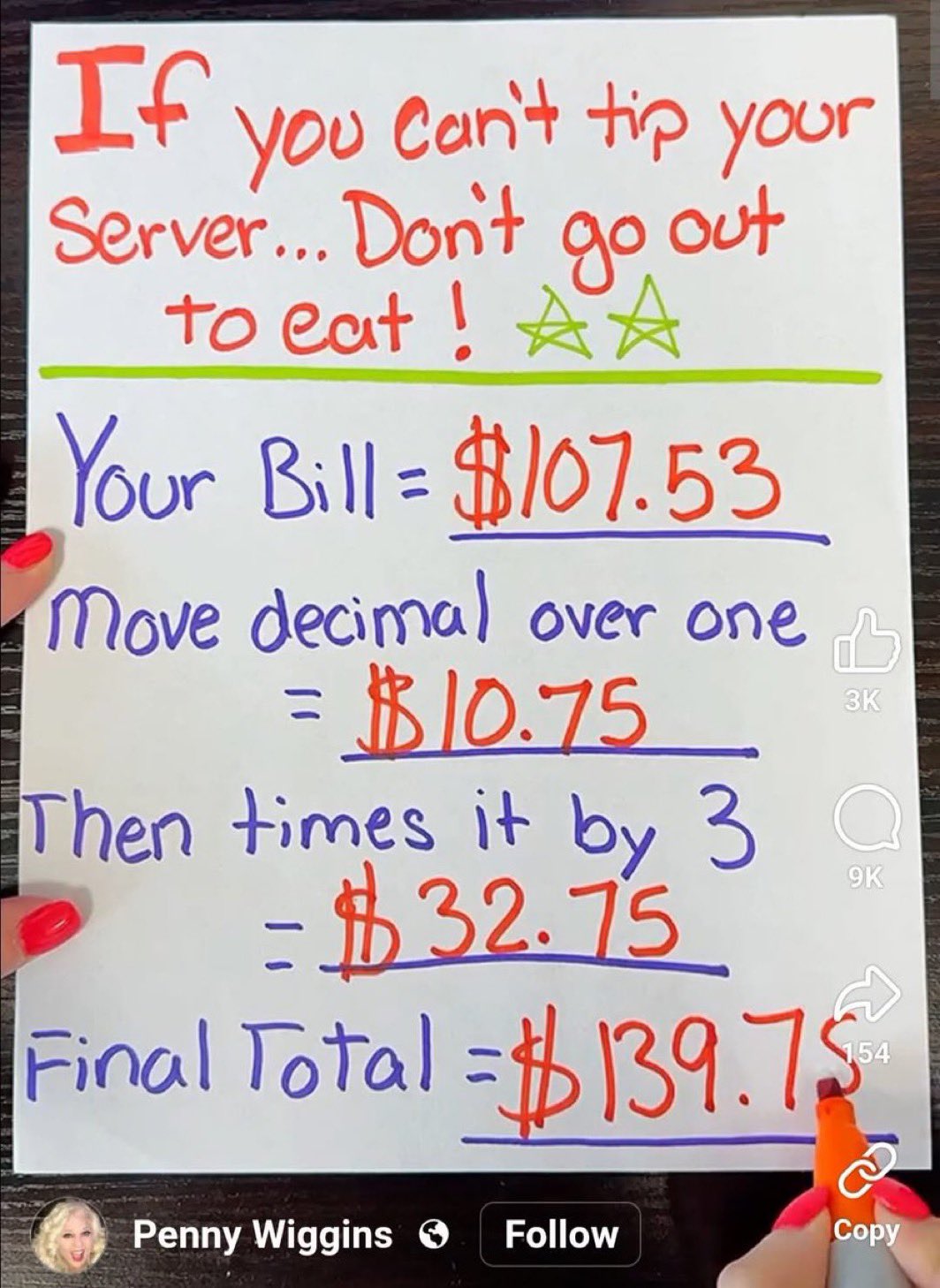NEWS
Tipping Culture is getting ridiculous… If you can’t pay your server, don’t open a restaurant – It needs to be BANNED!

As the clock struck midnight into July 1, 2025, a viral image from X user Kira Wontmiss has ignited a firestorm across social media, thrusting the contentious issue of tipping culture back into the national spotlight. The image, featuring a handwritten note suggesting a 30% tip—$32.75 on a $107.53 restaurant bill—has sparked outrage and debate, with users like @suayrez and @TheImmortal007 decrying the practice as absurd and exploitative. Posted just days ago on June 29, the image has already amassed thousands of reactions, reflecting a growing frustration with a system many trace back to its troubling origins in post-Civil War America.
The note, penned by someone named Penny Wiggins, outlines a simple calculation: move the decimal of the bill to determine a 10% tip ($10.75), then triple it for a 30% total. For many, this math feels less like a suggestion and more like a demand, especially when servers in the U.S. often earn a base wage as low as $2.13 per hour, supplemented heavily by tips. This practice, rooted in the exploitation of freed enslaved people after the Civil War, allowed employers to shift labor costs onto customers, a historical tidbit echoed in recent economic studies. Critics argue it’s a relic that no longer fits a modern economy, especially when compared to countries like Japan, where servers earn fair wages of $10-$15 per hour without expecting tips, or Australia, where the minimum wage for restaurant staff sits at $23 per hour.
The X thread reveals a divided public. Some, like @TeslaTopics, flip the script, suggesting that if servers can’t be paid fairly, restaurants shouldn’t operate—a sentiment shared by @OmniTradeA1, who highlights Japan’s no-tip model as a viable alternative. Others, such as @TheBlackGroyper, express disbelief at tipping $32 for a 10-second food delivery, while @loldude112 threatens negative reviews for such high suggested tips. International voices, like the Dutch @suayrez, call the U.S. system ridiculous, arguing that employers, not customers, should cover staff salaries. This global perspective underscores a stark contrast: in nations without tipping, restaurant workers earn 20% more on average than their U.S. counterparts, according to recent OECD data, suggesting the issue is less about culture and more about wage structure.
nah tipping culture is getting ridiculous… pic.twitter.com/1DdXYoCjsf
— kira 👾 (@kirawontmiss) June 29, 2025
The debate isn’t just online rhetoric. A 2024 Pew Research survey found that 68% of Americans support raising the base wage for service workers, a sentiment that gained traction as the U.S. Senate debated President Trump’s tax-cut bill on June 29, 2025—coincidentally the same day the image went viral. Yet, the bill sidestepped wage reform, leaving the tipped minimum wage untouched despite growing calls for change. In places like the District of Columbia, where the tipped minimum wage rose to $10 per hour on July 1, 2024, and is set to climb further, there’s a glimmer of progress. However, with many states still lagging—Oklahoma, for instance, allows a $2 per hour base for small employers—the reliance on tips persists, fueling customer resentment.
This tipping tension isn’t new, but the timing feels pivotal. As inflation bites and dining out becomes a luxury for some, the expectation to tip 30% feels like a tipping point—pun intended. The viral image has become a rallying cry, with users like @TheImmortal007 sharing memes that mock employers for shirking wage responsibilities, and others posting creative “tips” like “nah bro -2.47” to vent frustration. Historians point out that tipping’s American roots were cemented by the 1920s, when restaurateurs realized they could profit by underpaying staff, a practice that stuck even as racial and economic landscapes evolved.
So, what’s next? Abolishing tipping sounds appealing but poses challenges—restaurants might raise menu prices, a move customers could resist given the already high cost of dining. Yet, the momentum is building. With 72% of U.S. adults noting more tipping prompts than five years ago, per Pew Research, and a public increasingly opposed to automatic charges, the pressure is on lawmakers and businesses to rethink a system many see as broken. As the sun rises on July 1, 2025, this debate is far from over—it’s a cultural clash that could reshape how America eats out, one tip at a time.













